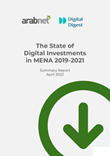
These so-called ‘strategic technology trends’ are part of a broader set of macrotrends that government leaders ought to address. According to Gartner, those include social instability, perpetual austerity, an aging population, rising populism, and the need to support sustainability goals.
“Now more than ever, technology priorities must be established in the context of business trends such as digital equity, ethics and privacy, widening generational chasms and the need for institutional agility,” said Rick Howard, research vice president at Gartner.
We must stress that the list has been created to “help government CIOs establish the rationale, timing and priority of technology investments.” It does not represent what government CIOs are spending most of their time or budget on today. Instead, CIOs should include these trends in their strategic planning over the next 12 to 18 months. We must also note that the trends vary in importance based on the tier of government - national, regional, or local - region and business context.
Adaptive Security
Companies must acknowledge that there is no perfect protection. Security needs to be adaptive; risk, trust, and security must be regarded as a continuous and adaptive process that anticipates and mitigates constantly evolving cyber threats.
Citizen Digital Identity
Defined as the ability to prove an individual’s identity via any publicly available government digital channel, Digital identity is paramount for inclusion and access to government services.
Multichannel Citizen Engagement
To be able to meet citizen expectations and achieve program outcomes, governments must be able to communicate with their citizens via their channel of choice. That would include communicating either in person, by phone, via mobile device through smart speakers, using chatbots, or via augmented reality.
Agile by Design
In today’s fast-changing digital landscape, “set and forget” investments are obsolete. Instead, CIOs must adopt an agile-by-design approach to build nimble and responsive environments.
Digital Product Management (DPM)
Instead of the commonly-used “waterfall” project management approach, which organizes the workflow of software development through a series of distinct, isolated, and often linear phases, CIOs should shift towards the quicker DPM, which involves developing, delivering, monitoring, refining and retiring “products” or offerings for business users or citizens. In the 2019 Gartner CIO Survey, more than two-thirds of government CIOs said they already have, or are planning to implement, digital product management.
Anything as a Service (XaaS)
An alternative to legacy infrastructure modernization, XaaS provides scalability and reduces time to deliver digital government services. The term denoted any IT service delivered on the cloud on a subscription basis. The 2019 Gartner CIO Survey found that 39% of government organizations plan to spend the greatest amount of new or additional funding in cloud services.
Shared Services 2.0
Instead of attempting to derive IT efficiencies through centralization, an approach that has often engendered poor results, CIOs ought to transition to Shared Services 2.0, which shifts the focus from cost savings to delivering high-value business capabilities such as such as enterprise-wide security, identity management, platforms or business analytics.
Digitally Empowered Workforce
An area where governments currently lag behind other industries, digitally enabled work environments engender employee satisfaction, retention, and engagement.
Analytics Everywhere
Government agencies should shift from the dashboard reporting of lagging indicators to autonomous processes that help people make better decisions in real time.
Augmented Intelligence
Government CIOs must reframe artificial intelligence as ‘augmented intelligence’, which Gartner defines as a human-centered partnership model of people and artificial intelligence working together to enhance cognitive performance.
For more info, you can check Gartner’s “Technology Trends in Government, 2019-2020” report and the companion report “Business Trends in Government, 2019-2020.” (Registration required)
Latest Business
Intelligence Report














